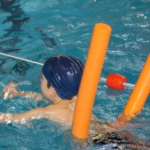
18 Aug Fun activities parents can use to develop STEM skills at home
You’re probably already encouraging STEM at home and don’t realise it, writes Rebecca Kerr
Children are naturally curious. They’re constantly engaging with their surroundings and observing the world around them. As a parent and role model, you may choose to lean into their exploration and encourage their innate inquisitiveness.
Exploring the world can help children later in life, especially in areas of education such as STEM (science, technology, engineering, and math). Introducing your child to STEM skills is important as it opens up opportunities to develop critical thinking and problem-solving skills and can impact their future interests. The good news is it’s likely you’re already exposing your child to STEM principles at home.

- Math in everyday activities
It’s easy to forget that we apply STEM skills regularly in our everyday life—like budgeting and cooking— which makes it easy to incorporate STEM play into day-to-day activities. You can practice math skills with your child by encouraging them to compile a simple grocery list with an age-appropriate budget and review how much money is spent each week. If your child enjoys cooking, they can help prepare dinner and follow a recipe, which requires them to interpret fractions or measurements of ingredients and consider the effect of temperature and time of cooking. By simply involving your child in these routine activities, you’re building STEM skills.
- The science of outdoor play
The key to involving your child in STEM-based activities is selecting topics or environments they are already interested in. For example, if you keep a vegetable garden and your child enjoys the outdoors, involve them in planting seedlings and get them to test the effects of different amounts of water or light to see how this affects the seedling’s growth. By collecting simple measurements each day (perhaps the height of the seedling) your child can draw a conclusion about the best amount of water or light to help that plant grow. This is a great way for your child to practise important scientific skills such as observation and the collections of data, while completing an everyday task.
- Use screen-free technology to answer questions
Technology helps us discover new information and solve problems. It’s likely that your child is already familiar with a lot of the technology we use in our daily lives, but you can introduce children to screen-free technology to help them further explore the world. For example, you and your child can experiment with navigation by using a compass for direction on your walk to the local park, or you can build a sun dial together and use this to estimate the time.
- Engineering opportunities to fail
And if something doesn’t work out along the way, encourage your child to consider what went wrong and a possible solution. Whether your child is building a structure out of gathered materials, floating boats that carry weight, or making paper airplanes of different designs, encourage them to lean into the potential for failure. As much as it can be difficult to see your child struggle, failure is an essential element of learning and development. Encountering a roadblock during a task provides opportunities to problem solve and consider possible solutions. Avoid providing the answer and ask open ended questions that might end with a solution.
By encouraging your child to actively engage in the STEM principles already present in their home environment, you’re helping them to deepen their perception of the world and assist in the development of critical thinking and problem-solving skills. Even if your child decides that STEM isn’t where their interests lie for their career path, the skills learnt during these lessons can easily transfer and benefit them in other areas of life.
Rebecca Kerr is Head of Science at Strathcona Girls Grammar, Melbourne.




